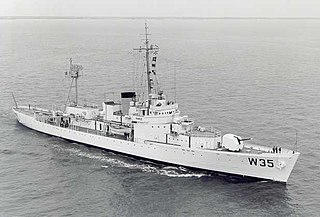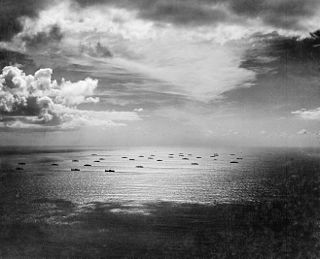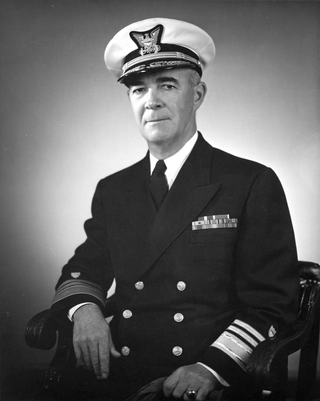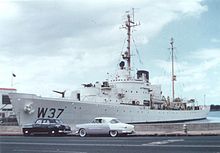
WPG/WAGC/WHEC-37, launched as USCGC Roger B. Taney and for most of her career called USCGC Taney, is a United States Coast Guard High Endurance Cutter notable as the last warship floating that fought in the attack on Pearl Harbor. She was named for Roger B. Taney (1777–1864), who served as U.S. Attorney General, Secretary of the Treasury, and Chief Justice of the United States.

USCGC Ingham (WPG/WAGC/WHEC-35) is one of only two preserved Treasury-class United States Coast Guard Cutters. Originally Samuel D. Ingham, she was the fourth cutter to be named for Treasury Secretary Samuel D. Ingham. She was the most decorated vessel in the Coast Guard fleet and was the only cutter to ever be awarded two Presidential Unit Citations.

The USCGC Bibb (WPG-31) was a 327-foot (100 m) Secretary-Class Coast Guard ship commissioned in 1936. Seven similar "combat cutters" were built and named for secretaries of the United States Treasury. Bibb was named for U.S. Secretary of the Treasury George M. Bibb.

USCGC Duane (WPG-33/WAGC-6/WHEC-33) was a cutter in the United States Coast Guard. Her keel was laid on May 1, 1935, at the Philadelphia Navy Yard, Philadelphia, Pennsylvania. She was launched on June 3, 1936, as a search and rescue and law enforcement vessel.
During the Battle of the Atlantic, British merchant shipping was formed into convoys for protection against German submarine attack. In March 1943 convoys HX 229 and SC 122 were the focus of the largest convoy battle of the war. Kriegsmarine tactics against convoys employed multiple-submarine wolfpack tactics in nearly simultaneous surface attacks at night. Patrolling aircraft restricted the ability of submarines to converge on convoys during daylight. The North Atlantic winters offered the longest periods of darkness to conceal surfaced submarine operations. The winter of 1942–43 saw the largest number of submarines deployed to the mid-Atlantic before comprehensive anti-submarine aircraft patrols could be extended into that area.
The ON and later ONS convoys were a series of North Atlantic trade convoys running Outbound from the British Isles to North America during the Atlantic campaign of the Second World War. The ON convoys replaced the earlier OA/OB series of outbound convoys in July 1941 and ran until the end of the campaign in May 1945. They were organized as alternating fast and slow convoys until March 1943, when the ONS series was begun to take over the slow trans-Atlantic traffic, after which all in the ON series were fast.

USCGC Campbell (WPG-32) was a 327-foot (100 m) Secretary-class United States Coast Guard ship built at the Philadelphia Navy Yard in 1935-1936 and commissioned in 1936. Seven similar "combat cutters" were built and named for secretaries of the United States Treasury.

Convoy ON 166 was the 166th of the numbered ON series of merchant ship convoys Outbound from the British Isles to North America. Sixty-three ships departed Liverpool 11 February 1943 and were met the following day by Mid-Ocean Escort Force Group A-3 consisting of the Treasury-class cutters Campbell and Spencer and the Flower-class corvettes Dianthus, Chilliwack, Rosthern, Trillium and Dauphin.

Convoy SC 121 was the 121st of the numbered series of World War II Slow Convoys of merchant ships from Sydney, Cape Breton Island to Liverpool. The ships departed New York City 23 February 1943; and were met by the Mid-Ocean Escort Force Group A-3 consisting of the United States Coast Guard (USCG) Treasury-class cutter USCGC Spencer, the American Wickes-class destroyer USS Greer, the British and Canadian Flower-class corvettes HMS Dianthus, HMCS Rosthern, HMCS Trillium and HMCS Dauphin and the convoy rescue ship Melrose Abbey. Three of the escorts had defective sonar and three had unserviceable radar.

Convoy SC 118 was the 118th of the numbered series of World War II slow convoys of merchant ships from Sydney, Cape Breton Island, to Liverpool. The ships departed New York City on 24 January 1943 and were met by Mid-Ocean Escort Force Group B-2 consisting of V-class destroyers Vanessa and Vimy, the Treasury-class cutter Bibb, the Town-class destroyer Beverley, Flower-class corvettes Campanula, Mignonette, Abelia and Lobelia, and the convoy rescue ship Toward.

Mid-Ocean Escort Force (MOEF) referred to the organisation of anti-submarine escorts for World War II trade convoys between Canada and Newfoundland, and the British Isles. The allocation of United States, British and Canadian escorts to these convoys reflected preferences of the United States upon United States' declaration of war and the organisation persisted through the winter of 1942–43 despite withdrawal of United States ships from the escort groups. By the summer of 1943, United States Atlantic escorts were focused on the faster CU convoys and the UG convoys between Chesapeake Bay and the Mediterranean Sea; and only British and Canadian escorts remained on the HX, SC and ON convoys.
USCGC Mojave (WPG-47) was a 240-foot Tampa-class United States Coast Guard cutter in commission from 1921 until 1947.
Convoy HX 156 was the 156th of the numbered series of World War II HX convoys of merchant ships from Halifax, Nova Scotia to Liverpool. Forty-three ships departed Halifax on 22 October 1941, and were met two days later by United States Navy Task Unit 4.1.3 consisting of Gleaves-class destroyer Niblack, Clemson-class destroyer Reuben James, Wickes-class destroyer Tarbell, and Benson-class destroyers Benson and Hilary P. Jones.

Western Local Escort Force (WLEF) referred to the organization of anti-submarine escorts for World War II trade convoys from North American port cities to the Western Ocean Meeting Point near Newfoundland where ships of the Mid-Ocean Escort Force (MOEF) assumed responsibility for safely delivering the convoys to the British Isles.

USCGC Spencer (WPG-36) was a Treasury-class cutter of the United States Coast Guard that served during World War II. She was named for U.S. Treasury Secretary John Canfield Spencer.

The UG convoys were a series of east-bound trans-Atlantic convoys from the United States to Gibraltar carrying food, ammunition, and military hardware to the United States Army in North Africa and southern Europe during World War II. These convoys assembled in Hampton Roads near the mouth of Chesapeake Bay and terminated in various North African locations as Axis forces retreated from 1942 through 1945.

Arctic naval operations of World War II were the World War II naval operations that took place in the Arctic Ocean, and can be considered part of the Battle of the Atlantic and/or of the European Theatre of World War II.

Convoy HX 212 was the 212th of the numbered series of World War II HX convoys of merchant ships from HalifaX to Liverpool. The ships departed New York City on 18 October 1942 and were met on 23 October by Mid-Ocean Escort Force Group A-3 consisting of the United States Coast Guard Treasury-class cutter USCGC Campbell, the destroyer Badger and the Flower-class corvettes Dianthus, Rosthern, Trillium, Dauphin, Alberni, Summerside and Ville de Quebec. The first five escorts had worked together previously, but the last three corvettes were attached to the convoy only for passage to the eastern Atlantic in preparation for assignments on Operation Torch. Summerside was the only escort equipped with modern Type 271 centimeter-wavelength radar.

Convoy ON 144 was a trade convoy of merchant ships during the Second World War. It was the 144th of the numbered series of ON convoys Outbound from the British Isles to North America. The ships departed Liverpool on 7 November 1942 and were joined on 8 November by Mid-Ocean Escort Force Group B-6 consisting of the Flower-class corvettes Vervain, Potentilla, Eglantine, Montbretia and Rose and the convoy rescue ship Perth. Group B-6 had sailed without the destroyers Fame and Viscount which had been damaged in the battle for eastbound convoy SC 104. The United States Coast Guard cutters Bibb, Duane, and Ingham accompanied the convoy from the Western Approaches with ships that detached for Iceland on 15 November.

Vice Admiral James Albert Hirshfield was the sixth Assistant Commandant of the United States Coast Guard. During World War II he was the commanding officer of the USCGC Campbell (WPG-32) during a battle with German U-boats, earning the Navy Cross.














